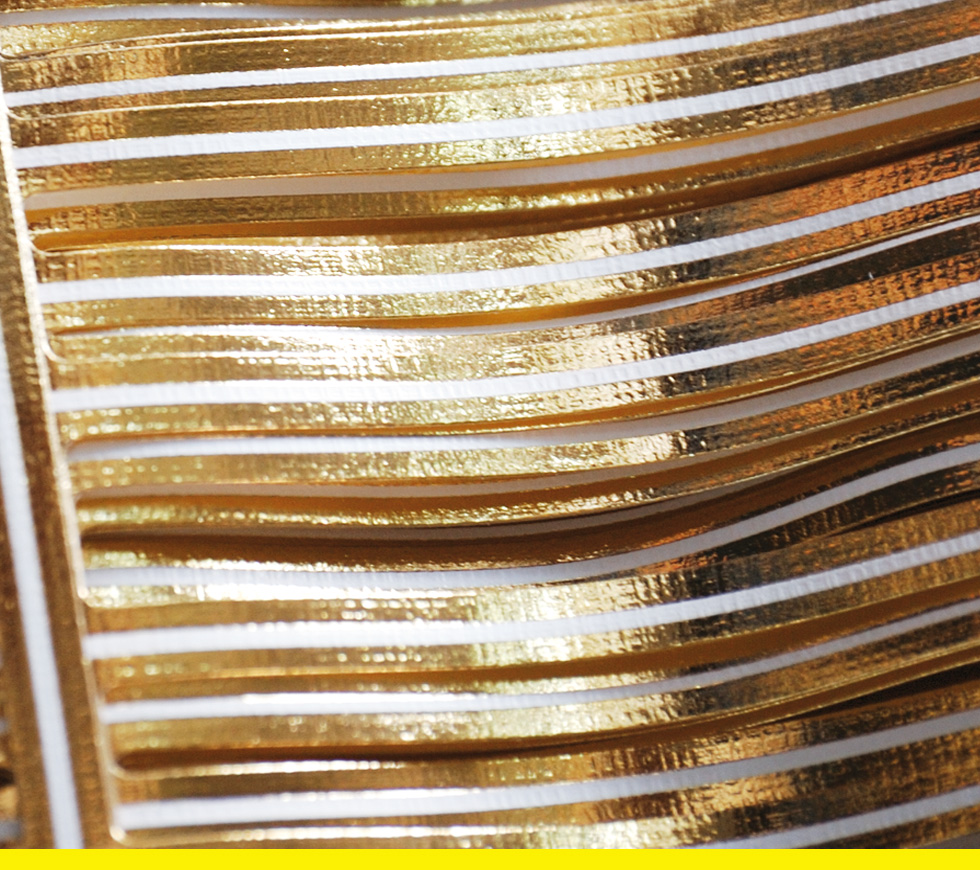Hotfoil
Hot foiling or hot foil stamping makes it possible to give certain parts of the graphics in a printed product (e.g. logos or names) a metallic effect in terms of both the colour and texture. The most common metallic effects are gold and silver, but other metals or non-metallic colours can also be used.
Microetching
The combination of hot stamping with finely etched brass and copper dies produces unique and highly sophisticated looks, with the micro-cuts made on the metal plate creating glimmering and light-catching effects. The uniqueness of each design makes this technology very useful as an anti-counterfeiting system.
Coldfoil
Cold foil printing, or COLD FOIL, is a printing technique that allows you to take advantage of offset technology to transfer a metal film directly onto a support without using clichés, heat or pressure, but only with the use of a slab and a specific glue. An innovative print, which allows you to obtain a precious ennoblement in line with a great variety of combinations and chromatic effects through the traditional four-color printing on cold foil. Cold rolling is suitable both for large surfaces and for the metallization of very thin sections.
H-UV offset
The innovative H-UV offset printing technique is based on the combined use of ink and special ultraviolet lamps, the radiation polymerises the ink film (or varnish) instantly, giving the print excellent brilliance. The H-UV offset printing technique brings with it many advantages: immediate drying; greater color brilliance, possibility of printing on non-absorbent materials (pvc, metallic papers and plastic materials). The possibility of carrying out a double H-UV coating (glossy and matt) in line allows you to create contrasts and effects that enhance your project.
Silk-screen printing
From custom to metallized colours, from classic to perfumed coatings, from extra-thick coatings to glitter: UV silk-screen printing is a silk-screen technique distinguished by the exceptional brightness of the colours it produces. UV silk-screen printing also perfectly covers all kinds of paper stock – even if it’s darker than the printed colours – without affecting the colours in any way.
Variable data and versioning
Digital printing techniques allow clients to have total freedom in customizing and differentiating printed products. Through a combination of the processing software and the skill of the operators, each copy printed can be different from the others. Variable data printing is the perfect way to produce targeted communication materials.
Joining and die-cutting
These are two techniques for customizing printed products and giving them a unique character. Joining different materials together makes it possible to create one-of-a-kind printing stock. Mechanical die-cutting and hi-tech cutting systems can be used to make highly creative and original products.


